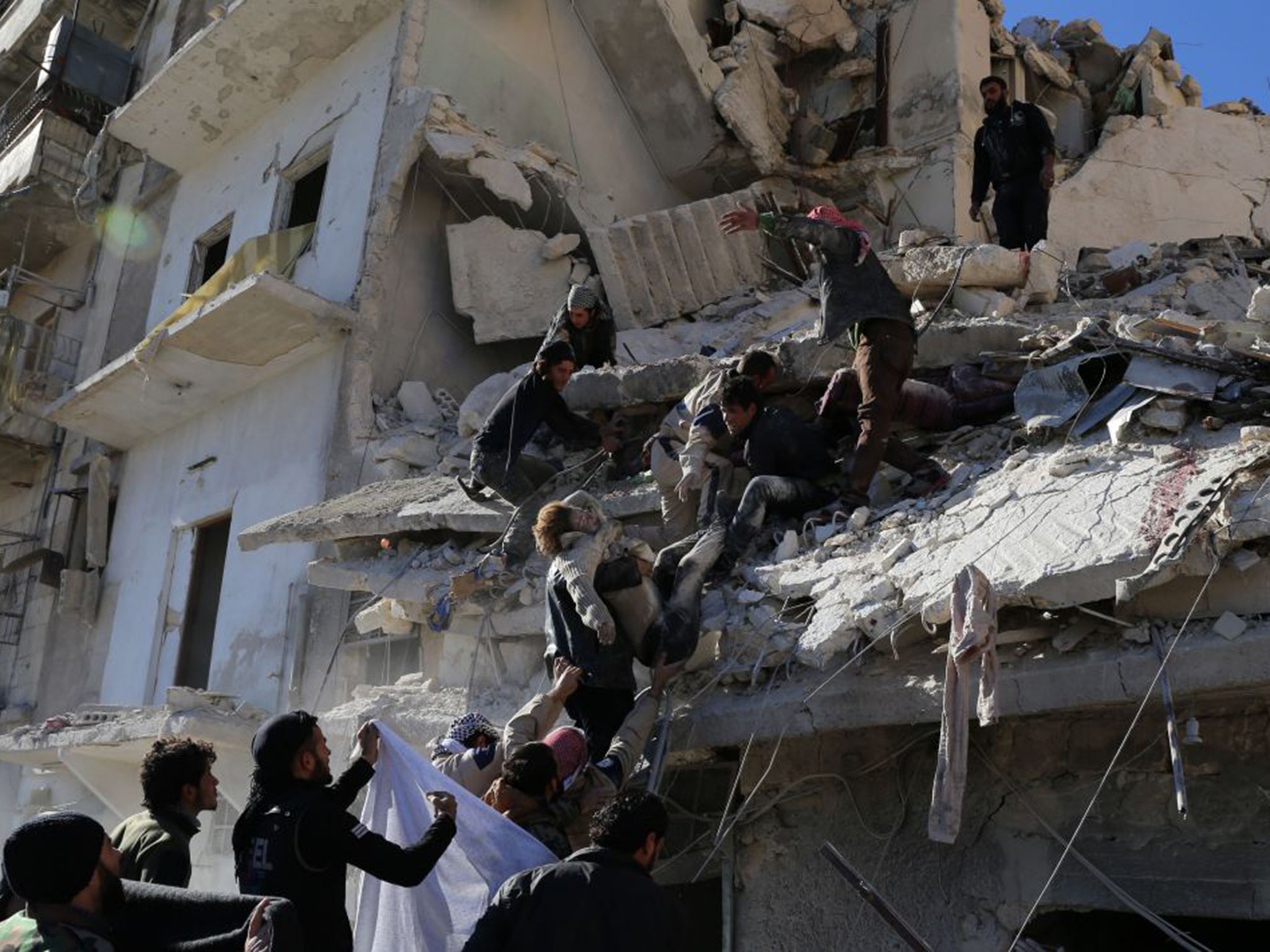To fight Isis we need to learn from the era of Calvinism
What Syria is going through at this time is no worse than what Germany experienced in the Thirty Years War that ended in 1648


As I learn of fresh Isis atrocities, I cannot help reminding myself that Europe was once in a similar situation to that in which the Middle East finds itself today. I am referring to the period of the Reformation, which started soon after Luther nailed his 95 theses to door of the castle church in Wittenberg, Saxony, in October 1517. Luther had denounced what he saw as the corrupt practices of his Church. Before long, his followers, who later became known as Protestants, broke away from the authority of the Pope in Rome.
This Protestant versus Catholic division – our version of Islam’s Sunni versus Shia – was replicated all over Europe. In Britain, France, the Netherlands and Germany, what started as disagreement and protest later morphed into religious persecution and then, often enough, into civil war. Only when these conflicts came to an end in the mid-1600s was this nightmare, which lasted 140 years, brought to a close.
What Syria is going through at this time is no worse than what Germany experienced in the Thirty Years War that ended in 1648. The historian Norman Davies describes the post-war scene thus: “Germany lay desolate. The population had fallen from 21 million to perhaps 13 million. Between a third and half of the people were dead. Whole cities like Magdeburg stood in ruins. Whole districts lay stripped of their inhabitants, their livestock, and their supplies. Trade had virtually ceased.”
Nor is the Syrian calamity any more disastrous than the English Civil War, which petered out in 1651. Read what the Cambridge historian, Robert Tombs, has to say about the conflict: “The Civil War was the most lethal conflict England had suffered since the Conquest. A recent estimate suggests around 86,000 killed in combat, nearly all soldiers; another 129,000, mostly civilians, succumbed to the diseases that accompanied war; and infant mortality reached the highest level ever recorded. These losses, in a population of 4-5 million, are proportionately much higher than those England suffered in the First World War.”
I should add that neither the Thirty Years War nor the English Civil War was caused solely by religious hostility. The former was part of a Continental power struggle, as well as being a contest between Catholics and Protestants. On the latter, Tombs comments that: “Religion was the clearest dividing line, but even that does not explain everything.” But then religion is not the sole generator of Middle East conflict.
The most striking similarity between the contemporary Middle East and the Reformation is that the most austere versions of religious belief – Christian Calvinism, and Islamic Wahhabism – have been very influential.
The two creeds, for instance, think of themselves as citadels of purity. Calvin was more radical than Luther. He divided humanity into the Damned and Elect. His followers saw themselves as “Strangers among Sinners”. The good Calvinist family would put all pleasure and frivolity to one side. There was to be no dancing, no songs, no drinking or gaming, no bright clothes or loud language. Likewise, where Wahhabism has influence – which includes the regions controlled by Isis – such activities as listening to music, dancing, smoking, playing cards, drawing human or animal figures or acting in a play or writing fiction may be banned.
What particularly shocks us about the current situation is that Isis shoots or beheads its prisoners. But is this worse than being burnt at the stake? In England during the reign of Mary I, the Catholic daughter of Henry VIII, some 290 Protestants were burnt at the stake, which has been described as “the most intense persecution of its kind anywhere in 16th-century Europe.” When the flames were licking round Bishops Latimer of Worcester and Ridley of Rochester, both tied to stakes in Oxford, Latimer urged his colleague: “Be of good comfort, Master Ridley, and play the man. We shall this day light such a candle by God’s grace in England as I trust shall never be put out.”
Isis destroys ancient sites of historical and cultural importance such Palmyra in Syria, which is classified by Unesco as being “of outstanding universal value”. Iconoclasm was also a feature of the Reformation. In 1566, a Welsh Protestant merchant doing business in Antwerp was shocked to see “all the churches, chapels and houses of religion utterly defaced, and no kind of thing left whole within them, but broken and utterly destroyed, being done after such order and by so few folks that it is to be marveled a”.
In 1651, during Cromwell’s time, a proposal was introduced into the House of Commons that “all Cathedral churches, where there are other churches or chapels sufficient for the people to meet in for the worship of God, be surveyed… pulled down, and sold, and be employed for a stock for the use of the poor.” While this motion failed to carry, soon afterwards the nave of St Paul’s Cathedral in London was being used as a cavalry barracks with stables for 800 horses.
These times of upheaval in Europe were finally brought to an end and replaced with something that could be called peace. This raises the question whether the Treaty of Westphalia of 1648, which closed the Thirty Years War, or Charles II’s Restoration settlement dating from 1660, have something to say to us now in our efforts to stabilise in the Middle East.
The Treaty of Westphalia is the more helpful, for it introduced a measure of religious toleration. Among its many clauses it guaranteed that Christians living in principalities where their denomination was not the established church had the right to practice their faith in public during allotted hours and in private at their will.
The Restoration was less accommodating. Dissenters were excluded from town government and nonconformist worship in private was forbidden. However, dissenters had the right to sit and vote in Parliament – and this meagre concession turned out to have been enough to bring the 140-year nightmare to an end.



Join our commenting forum
Join thought-provoking conversations, follow other Independent readers and see their replies